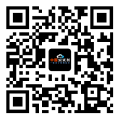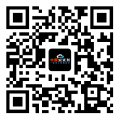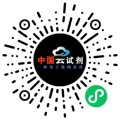详细说明
Purity
>95%, by SDS-PAGE visualized with Silver Staining and quantitative densitometry by Coomassie® Blue Staining.
Endotoxin Level
<0.10 EU per 1 μg of the protein by the LAL method.
Activity
Measured by its binding ability in a functional ELISA. When Recombinant Human LILRA2/CD85h/ILT1 is coated at 2 µg/mL, Recombinant Human Angiopoietin-like Protein 7/ANGPTL7. (Catalog # ) binds with a typical ED 50 of 150-900 ng/mL.
Source
Human embryonic kidney cell, HEK293-derived Gly24-Asn449, with a C-terminal 6-His tag
Accession #
N-terminal Sequence
AnalysisGly24
Predicted Molecular Mass
48 kDa
SDS-PAGE
70-81 kDa, reducing conditions
9040-T4 |
| |
Formulation Lyophilized from a 0.2 μm filtered solution in PBS. | ||
Reconstitution Reconstitute at 500 μg/mL in PBS. | ||
Shipping The product is shipped at ambient temperature. Upon receipt, store it immediately at the temperature recommended below. | ||
Stability & Storage: Use a manual defrost freezer and avoid repeated freeze-thaw cycles.
|
Data Images
Bioactivity
| When Recombinant Human LILRA2/CD85h/ILT1 (Catalog # 9040-T4) is coated at 2 µg/mL, Recombinant Human Angiopoietin-like 7 Protein (Catalog # 914-AN) binds with a typical ED50 of150-900 ng/mL. |
Background: LILRA2/CD85h/ILT1
LILRA2, also known as ILT1, CD85h, and LIR7, is an approximately 70 kDa variably glycosylated transmembrane protein that regulates immune cell activation (1). Mature human LILRA2 consists of a 426 amino acid (aa) extracellular domain (ECD) with 4 Ig-like domains, a 21 aa transmembrane segment, and a 13 aa cytoplasmic tail (2). Alternative splicing generates isoforms with short deletions between the fourth Ig-like domain and the transmembrane region, and an isoform that is truncated C-terminal to the fourth Ig-like domain (3, 4). LILRA2 is expressed on monocytes, neutrophils, basophils, and eosinophils (5-7). It contains a positively charged arginine residue in its transmembrane segment, enabling association with the signaling protein Fc epsilon RI gamma (5). Cross-linking of LILRA2 on monocytes induces the production of multiple cytokines as well as the upregulation of Fc gamma receptors (6, 7). Cross-linking also restricts monocyte differentiation into immature dendritic cells, phagocytic activity, and antigen presentation to T cells (6, 7). R&D Systems in-house testing indicates that LILRA2 binds to Angiopoietin-like 7, consistent with the demonstrated functional interactions between other members of these protein families (8).
References:
Thomas, R. et al. (2010) Clin. Rev. Allergy Immunol. 38:159.
Borges, L. et al. (1997) J. Immunol. 159:5192.
Jones, D.C. et al. (2009) Eur. J. Immunol. 39:3195.
Mamegano, K. et al. (2008) Genes Immun. 9:214.
Nakajima, H. et al. (1999) J. Immunol. 162:5.
Lu, H.K. et al. (2012) PLoS One 7:e33478.
Lee, D.J. et al. (2007) J. Immunol. 179:8128.
Zheng, J. et al. (2012) Nature 485:656.
Long Name:
Leukocyte Immunoglobulin-like Receptor, Subfamily A (with TM domain), Member 2
Entrez Gene IDs:
11027 (Human)
Alternate Names:
CD85 antigen-like family member H; CD85h antigen; CD85h; ILT1; ILT-1; ILT1CD85H; Leukocyte immunoglobulin-like receptor 7; leukocyte immunoglobulin-like receptor subfamily A member 2 soluble; leukocyte immunoglobulin-like receptor subfamily A member 2; leukocyte immunoglobulin-like receptor, subfamily A (with TM domain), member 2; LILRA2; LIR7; LIR7LIR-7Immunoglobulin-like transcript 1










 粤公网安备44196802000105号
粤公网安备44196802000105号